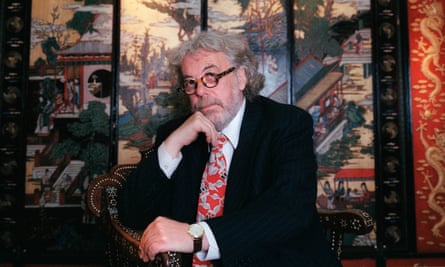
Mark Frith was 57 when he won a Bafta for The Lie of the Land, a documentary about British farming released in 2007. He had been making films for 30 years. But shortly afterwards, he found himself feeling weary. “I thought, things can only go downhill from here.” Frith knew he needed to do something else – but what?
A few years earlier he had bought his childhood home, which his mother had still been renting, and moved in with his wife, Emma, and two children for the final months of his mother’s life. The house, in Gloucestershire, looks out over the Severn vale.
As a boy, he loved to sketch birds. “I was one of five sons to a single mum. We ran wild in the countryside and played like animals in the hedgerows.”
The return to his childhood home stirred some unacknowledged yearning in him, because while Frith wondered aloud about a second career in landscape gardening, he heard a different internal voice. “That child who used to love drawing whispered to me down the years,” he says.
Frith bought pencils and began to sketch – mostly friends’ children. It was the first time he had drawn since childhood. At art school, which he attended before film school, he was a conceptual artist, and drawing was “frowned upon as regressive”.
Frith had an idea. There was a great oak tree at Nibley Green, a couple of fields from home. It had stood out to his young self as a “fantastical giant – a treasure trove, home to jackdaws, foxes, a barn owl, beetles, bats. It was a cave inside. We used to squeeze in through this hole.” He decided he would lock himself away for two months to draw it in all its glorious detail.
Frith drew “every twig and every bud” on a large sheet of paper, 150cm by 130cm. “While I was drawing,” he says, “there came moments when it was as though the tree was drawing itself. I could feel the tree, I could smell the bark. I had spent so much time playing in that tree, it was deep inside me. And it emerged in this drawing.”
His finished oak held “a real power”, he says. “As you walk towards it, it just grows. The detail emerges.”
A friend suggested he approach Felix Dennis, arts patron and lover of trees. “I found out he was doing a poetry reading in Stratford-on-Avon,” Frith says. “I staggered into his dressing room with this great big drawing, plonked it down in front of him and said: ‘Mr Dennis, I want to draw these oak trees.’ I knew the tree would talk. ‘Right,’ he said, ‘You better come and see me.’”
At lunch a few weeks later, they talked for hours, drank three bottles of wine, and finally Dennis wrote a contract on a piece of paper that he rolled and stuffed inside one of the empty bottles. It was for 20 drawings of “the most important oak trees in Britain”. He would pay Frith “regularly and handsomely”. At 60, Frith had become a tree portraitist.
Over the next three winters he travelled the length and breadth of Britain and spent days with each of the trees, selected with the help of the Ancient Tree Forum, the Tree Council, the Woodland Trust and “other ancient tree nuts”.
In 2014 – the year Dennis died – Frith completed the project. The resultant collection was exhibited at Kew in 2018, Dennis having donated half the drawings before he died.
Frith has since started work on a 20-drawing series of Britain’s most important ash trees. Against the backdrop of ash dieback, the project feels urgent. “These beautiful old ash trees are going to be lost to us,” he says. “They are 350 years old and they are dying because of a disease that we’ve spread.”
Drawing is not only an act of care and a demand for preservation, but it “gives me that interface between my passion for the natural world and my creativity,” Frith says. It has also given him a different perspective on the passage of time. “I’m an old man yet I’m only 71, and some of the trees I’ve drawn are 1,000 years old. When I’m with them and when I draw them, I think about my mortality and the brief nature of human life that passes fleetingly beneath them.”



